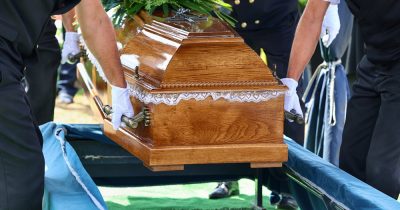
Margaux Hemingway once seemed to have it all — beauty, fame, and a last name that turned heads around the world.
For a time, the supermodel graced nearly every major magazine cover, becoming one of the most recognizable faces of the ’70s.
But behind the glamorous façade was a life marked by pain, and in 1996, police found her badly decomposed body. What they would uncover next stunned even those who thought they knew her best.
Her looks defined a generation
She had the name, the face, and the fame, but not even that could save Margaux Hemingway.
To the world, she was everything: a six-foot-tall blond beauty, the first model to land a million-dollar contract, and a woman who seemed born for the spotlight.
In the 1970’s, she had the name, the connections, and the looks that defined a generation. But behind the camera flashes, red carpets, and glossy magazine covers, Margaux’s life told a very different story — one marked by pain, addiction, and the haunting legacy of the Hemingway name.
And in 1996, that story ended in a way that still breaks hearts.
Meaning behind her name
Born on February 16, 1954, Margaux Louise Hemingway was literary royalty — the granddaughter of iconic writer Ernest Hemingway. She was the middle daughter of three girls born to Byra Louise (née Whittlesey) and Jack Hemingway, the eldest son of writer Ernest Hemingway.
Margaux was originally named Margot, but when she found out she was named after the fancy French wine Château Margaux — something her parents were sipping the night she was conceived — she decided to switch up the spelling to ”Margaux.”

The family lived for several years on Ernest Hemingway’s farm in Cuba before relocating to San Francisco, where her father worked as a stockbroker. In 1967, they moved again—this time to the mountainous town of Ketchum, Idaho, the very place where Ernest Hemingway had taken his own life six years prior.
At just 21, Margaux exploded onto the modeling scene. With her tall frame and unforgettable face, she made history by signing the world’s first-ever million-dollar contract with Fabergé for their Babe perfume in 1975. Time magazine dubbed her “The New Beauty.” Vogue, Elle, and Cosmopolitan couldn’t get enough of her.
In 1975, New York fashion artist Joe Eula praised Ms. Hemingway, saying she had “the face of a generation, as recognizable and memorable as Lisa Fonssagrives and Jean Shrimpton.”
“Suddenly, I was an international cover girl. Everybody was lapping up my Hemingwayness,” Margaux later recalled. “It sounds glamorous, and it was. I was having a lot of fun. But I was also very naive when I came on the scene. I genuinely thought that people liked me for myself — for my humor and good qualities. I never expected to meet so many professional leeches.”
How Margaux inherited Ernest’s spirit
But Margaux wasn’t just a model — she was a cultural force. She was also very well aware that her last name attracted attention.
“Of course I capitalize on my name. But, gee, I do it in style!” she told a magazine in 1979.
She often said that her free spirit was inherited from her “grandpa” and learned early on how to make headlines.
And there were definitely some similarities between Margaux and her grandfather. Her first modeling jobs included a shoot for Town & Country magazine in Key West. Of all Ernest Hemingway’s granddaughters, Margaux inherited his size and broad, handsome features. She carried herself with a rolling, athletic gait and embraced a philosophy of living big and seeking adventure. She once said she had “Hemingway’s spirit in her marrow.”
“I used to say that,” Margaux once explained in 1984. “But now, I’m more humble. That’s something for other people to say. I’m sort of a daredevil, I guess.”
Skiing accident in 1984
At the height of the disco era, Margaux partied at Studio 54 with icons like Bianca Jagger and Andy Warhol. She starred in her first movie, Lipstick (smeared by critics), alongside her sister Mariel Hemingway, and followed it with films like Killer Fish and Over the Brooklyn Bridge.
But behind the flashbulbs, Margaux was struggling. As a frequent presence at Studio 54, she started experimenting with alcohol and drugs.

Since her teens, she battled depression, bulimia, and epilepsy. Alcohol became her way of self-medicating. A skiing accident in 1984 left her injured and vulnerable. The weight gain that followed, along with career setbacks, sent her spiraling. She checked into rehab. She posed for Playboy in 1990 in a bid to reinvent herself.
“I’m a Hemingway. I know all about addiction. We all have the curse of alcoholism,” she once admitted.
”All drugs do is screw you up. It’s junk,” she also said.
Cause of death
The pressures of fame, the shadow of her famous grandfather, and a lifetime of internal pain created a toxic storm. Her relationships were strained — her marriages ended in divorce, and her ties to her family, especially her father, fell apart.
In the early 1990s, Margaux alleged that her father had sexually abused her during childhood. He and her mother denied it and cut off contact. Years later, her sister Mariel confirmed the claims.
On July 1, 1996, Margaux Hemingway was found dead in her small Santa Monica apartment. She had recently moved into a studio apartment near the beach.

It all started when Margaux didn’t answer her phone or respond to knocks at the door. Friends then asked a nearby worker to fetch a ladder so they could get into her home through the balcony.
When police found her, the former supermodel had taken a lethal dose of phenobarbital. The toxicology report showed she had swallowed so many pills that her body didn’t even have time to digest them all before she passed.
She was just 42.
“You can’t escape the Hemingway curse”
Sadly, officials from the Los Angeles coroner’s office said the body was so decomposed that identifying it right away was difficult. At first, the police could only confirm that the remains belonged to a woman.
It was ruled a suicide. And heartbreakingly, she became the fifth member of the Hemingway family to take their own life.
“You can’t escape the Hemingway curse,” she had once said.
She died just one day before the anniversary of her grandfather Ernest Hemingway’s own suicide — exactly 35 years earlier.
More than her struggles
Margaux’s story is one that still resonates deeply: a woman who seemed to have it all but was quietly battling demons no one could see.
“Margaux was a beautiful, generous, and kind soul,” said her sister Mariel, who is still alive today at 63 years old. “Her struggles were real, and they were many. But she was more than her struggles. She was a person who loved deeply and wanted to be loved.”
Mariel has dedicated herself to advocating for mental health awareness. She contributed to the acclaimed documentary Running from Crazy, which explores her family’s struggles with mental illness.

Margaux’s legacy
As people continue to discover Margaux’s photos, revisit her films, and learn about her life, Margaux Hemingway remains a hauntingly beautiful symbol of talent, tragedy, and the cost of a spotlight too bright to bear.
At best, Margaux Hemingway’s story teaches us a hard truth about what it means to grow up in the shadow of a giant name. Her story urges us to look beyond the surface — to have compassion for those who seem to have it all but are fighting silent wars. It teaches us that legacy is more than just a name or fame; it’s about the human being behind it, with all their fragility and courage.
Most importantly, Margaux’s life invites us to talk openly about mental health, addiction, and the pressures of fame — conversations that can help others who feel trapped in their own shadows. Because sometimes, the greatest lessons come from the most heartbreaking stories.
READ MORE
- Eric Clapton’s tragic last promise to his son, who died after falling 53 floors
- Phillip Herron: Inside a single dad’s tragic end




